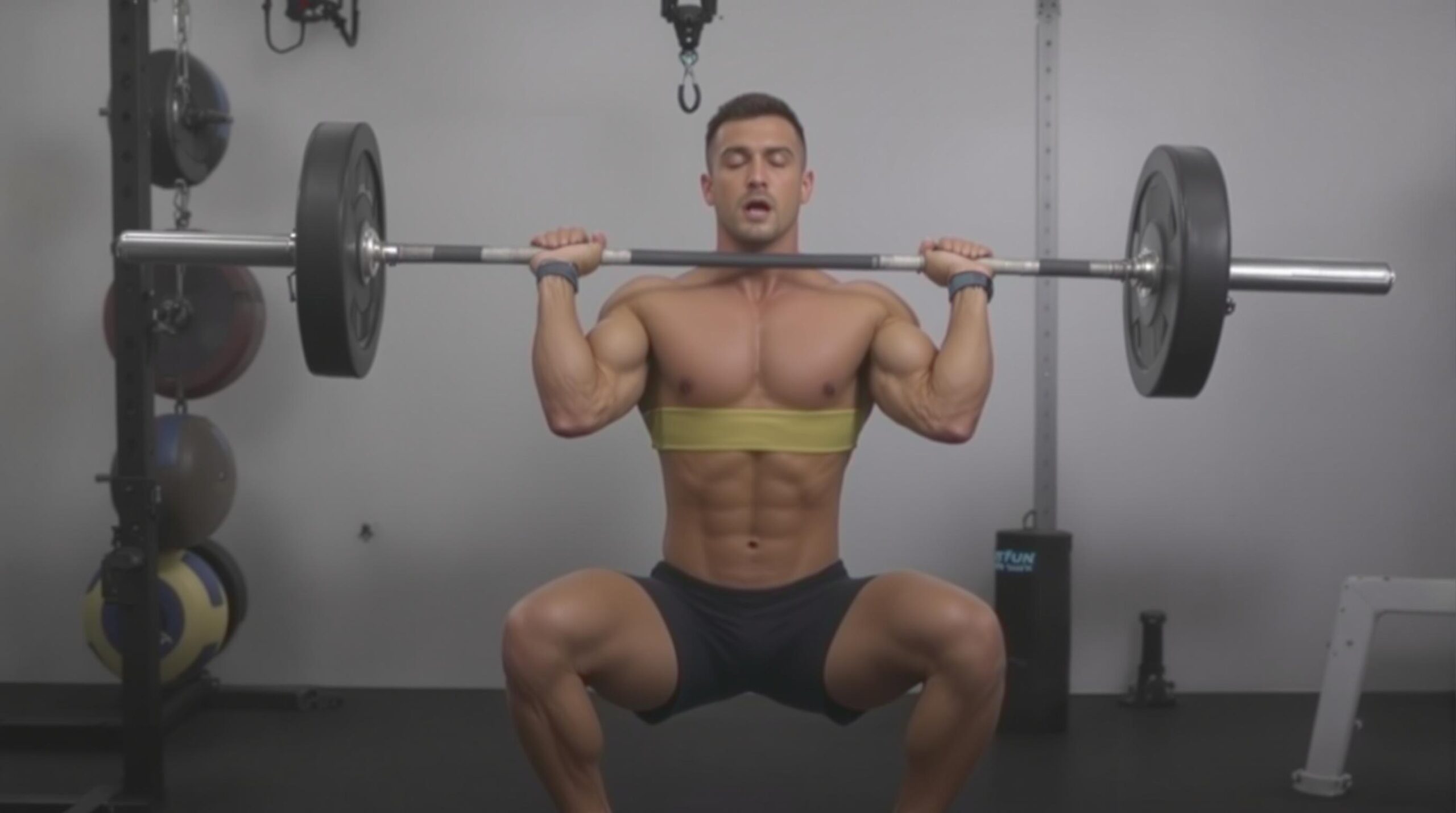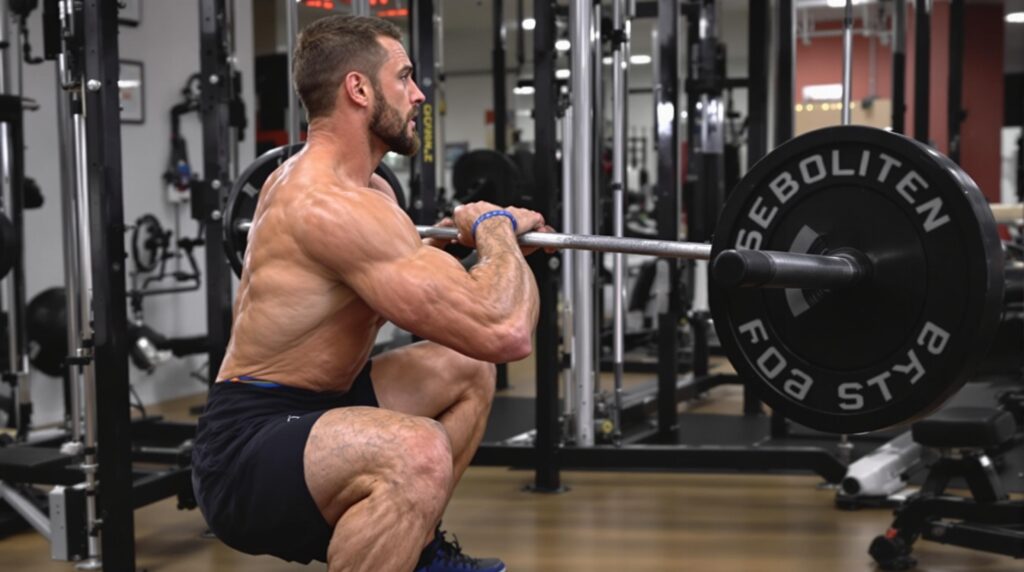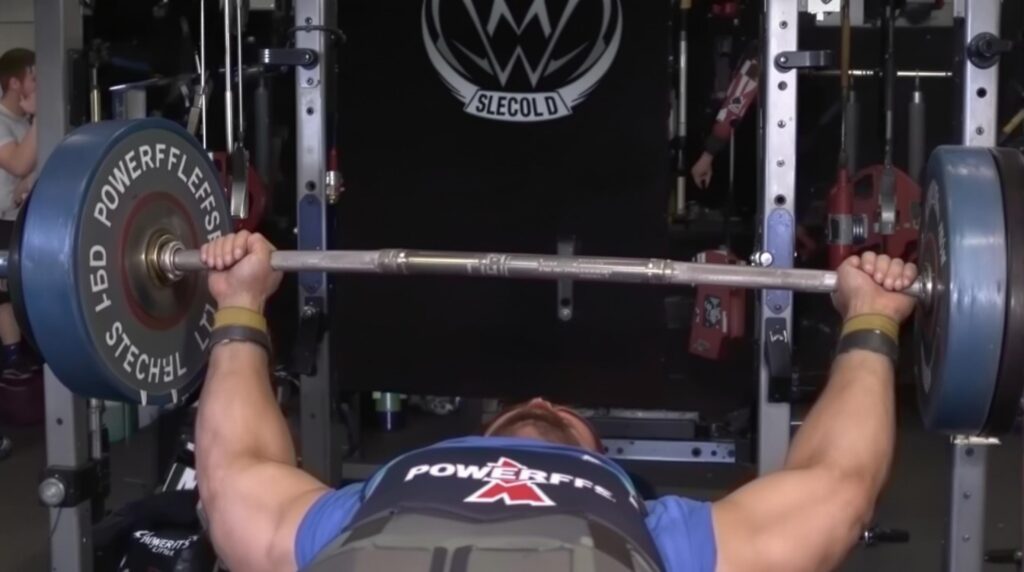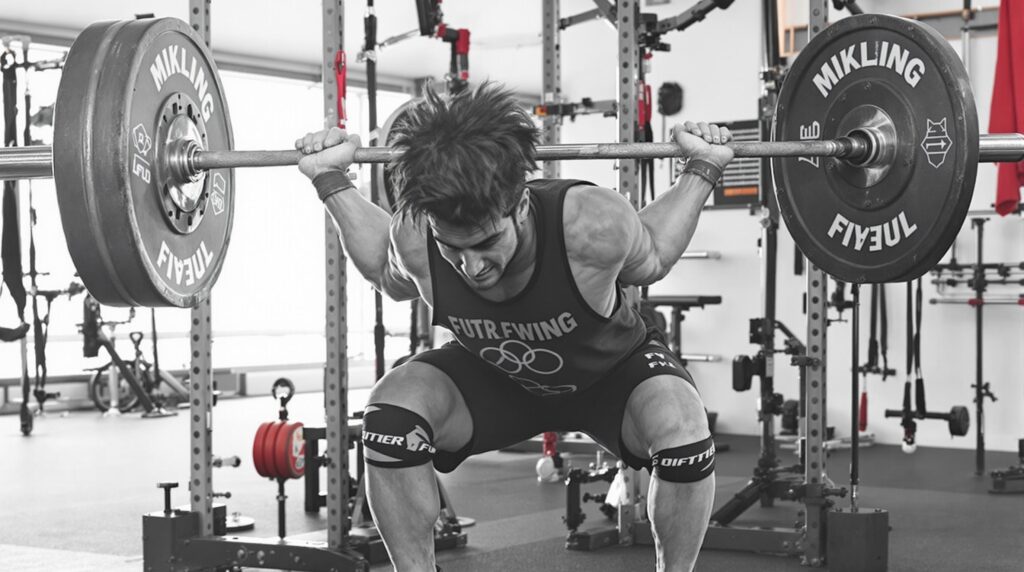The squat stands as the undisputed king of lower body exercises in the bodybuilding world, capable of transforming your physique from average to impressive with consistent practice. Scientific research confirms that proper squat technique not only builds massive quadriceps but also triggers systemic muscle growth through hormonal responses that benefit your entire physique.
Key Takeaways
- Squats trigger up to 21% higher testosterone levels compared to isolation exercises, making them essential for natural muscle growth
- Full-range squats produce 18% greater quadriceps development than partial reps, highlighting the importance of proper depth
- Proper squat form requires shoulder-width stance with knees tracking over toes to maximize muscle activation while minimizing injury risk
- Various squat variations target different muscle groups, with Bulgarian split squats increasing gluteus maximus activation by 27%
- A structured 12-week periodization approach can break through plateaus and stimulate continuous lower body growth
The Science Behind Squats: How They Transform Your Physique
The squat isn’t just another exercise – it’s a comprehensive muscle-building movement that simultaneously activates your quadriceps, hamstrings, glutes, and core stabilizers. This multi-joint compound movement creates the perfect environment for muscle growth and full-body strength development.
Research published in 2022 demonstrated that just 10 weeks of consistent squat training increased quadriceps cross-sectional area by 0.12 cm² in the vastus medialis and 0.19 cm² in the vastus lateralis. The gains in the vastus lateralis were strongly correlated with overall strength improvements.
Beyond muscle activation, squats create a powerful hormonal response. They’ve been shown to elevate testosterone and growth hormone levels by up to 21% compared to isolation exercises, according to data from CircleDNA. This hormonal boost supports muscle protein synthesis throughout your body, not just in the worked muscles.
The intense nature of squat bodybuilding also triggers what exercise scientists call the EPOC effect (Excess Post-Exercise Oxygen Consumption). This metabolic afterburn increases calorie expenditure by 15-20% for up to 48 hours after your workout, making squats valuable for both muscle growth and fat loss.

Perfect Your Squat Form: Technique Mastery for Maximum Results
Mastering proper squat form is essential for both muscle development and injury prevention. The back squat starts with feet at shoulder-width, toes slightly turned out, and the barbell resting securely across your upper traps (not on your neck). Maintain a neutral spine throughout the movement.
As you descend, push your hips back while keeping your chest up, creating what Stronglifts calls a “hip hinge” pattern. Your knees should track in line with your toes, not caving inward. Aim to reach at least parallel depth where your hip crease drops below knee level.
Common form errors can significantly reduce effectiveness and increase injury risk. If your knees collapse inward (valgus), add lateral band resistance of 15-30 pounds around your knees during warm-up sets. This external cue helps reinforce proper knee tracking and strengthens the stabilizing muscles.
For lifters who lean too far forward, try front rack holds with 30% of your one-rep maximum for three sets of 30 seconds. This improves thoracic mobility and strengthens the upper back muscles needed to maintain an upright torso position during squats.
A 2025 study published in Stronger by Science found that full-range squats with 120° knee flexion produce 18% greater distal quadriceps development compared to partial reps. This data reinforces the importance of achieving proper depth rather than loading more weight with reduced range of motion.
Squat Variations for Complete Lower Body Development
While the traditional back squat remains the cornerstone of lower body development, incorporating different squat variations ensures balanced muscle development and prevents plateaus. Here are key variations to include in your program:
The back squat serves as the foundation for overall lower body mass. It effectively targets all four quadriceps heads while engaging the glutes, hamstrings, and core as synergists. For maximum quadriceps stimulation, maintain a more upright torso position with the bar higher on your traps.
Bulgarian split squats offer unique benefits by increasing gluteus maximus activation by 27% compared to bilateral squats, according to MACFit research. This unilateral exercise preferentially targets the vastus lateralis and vastus intermedius when performed with a 45° forward trunk lean. Adding this variation addresses muscle imbalances between legs.
The goblet squat, performed holding a kettlebell or dumbbell at chest level, increases rectus femoris activation by 33% versus back squats. This makes it ideal for developing the “teardrop” quadriceps muscle that many bodybuilders seek. The elevated front load position forces greater anterior chain engagement and promotes proper depth.
For complete development, I recommend including at least two squat variations in your weekly training program. This approach ensures all muscle fibers are stimulated through different movement patterns and loading positions.
The Depth Debate: How Low Should You Go?
Few topics generate more gym debate than proper squat depth. The scientific evidence provides clear guidance based on both muscle activation and joint health considerations.
Parallel squats (reaching 90° knee flexion) generate approximately 85% of maximum quadriceps activation while minimizing stress on the lumbar spine. This depth represents the minimum effective range for substantial growth, making it suitable for most lifters, especially those with mobility limitations or back concerns.
Deep squats (reaching 140° knee flexion) produce 12% greater gluteus maximus hypertrophy compared to parallel depth, according to a 2025 study in Frontiers in Physiology. However, this additional depth requires excellent ankle mobility and hip structure that accommodates deep flexion.
Interestingly, a 2025 comparative analysis found no significant difference in quadriceps growth between squats performed to 90° versus 140° knee flexion over an 8-week training period. This suggests that parallel depth suffices for quadriceps development, with deeper squats primarily benefiting posterior chain muscles.
My recommendation aligns with the latest research – squat to the depth that your individual anatomy allows while maintaining proper form. For most lifters, this means reaching at least parallel, where the hip crease descends below knee level.
Progressive Overload Strategies for Continuous Growth
Progressive overload forms the cornerstone of any successful squat program. Without gradually increasing the challenge to your muscles, growth will stagnate. The ideal approach depends on whether your primary goal is strength or hypertrophy.
For strength-focused training, work with 80-85% of your one-rep maximum for 3-5 sets of 3-5 repetitions. This intensity range optimally develops both neural efficiency and muscle fiber recruitment. Track your progress by aiming to add 2.5-5 pounds to the bar each week while maintaining perfect form.
Hypertrophy-focused training benefits from a slightly lower intensity of 65-75% of your one-rep maximum for 4-5 sets of 8-12 repetitions. This range maximizes the time under tension and metabolic stress needed for muscle growth. Progress by increasing reps before adding weight.
Tempo manipulation provides another powerful overload mechanism. Research from Frontiers in Physiology demonstrates that slow eccentric tempos (4-second lowering phase) increase vastus lateralis cross-sectional area by 4.9%, compared to just 1.6% with standard tempo squats. Implementing a controlled descent forces greater muscle fiber recruitment.
I recommend using the 3×8 workout method as a baseline approach, then periodically adjusting variables like set count, rep range, and tempo to create new stimuli for growth.
12-Week Periodization Blueprint for Massive Legs
Structured periodization prevents plateaus and maximizes gains by systematically varying training variables over time. This 12-week blueprint delivers proven results for leg development:
Phase 1 (Weeks 1-4): Accumulation – Focus on building volume and establishing proper movement patterns with 4 sets of 12 back squats at 60% of your one-rep maximum. Rest 90 seconds between sets and perform twice weekly. The goal is creating metabolic stress and muscle damage that stimulates growth.
Phase 2 (Weeks 5-8): Intensification – Shift to medium-heavy loading with 5 sets of 5 paused squats at 75% of your one-rep maximum. The pause occurs at the bottom position for 2 seconds, increasing time under tension and reinforcing proper technique at depth. Rest 2-3 minutes between sets and perform twice weekly.
Phase 3 (Weeks 9-12): Peak – Emphasize neural adaptations and maximum force production with 3 sets of 3 deficit squats (standing on 1-inch platforms) at 85% of your one-rep maximum. This phase recruits high-threshold motor units and creates new stretch stimuli. Rest 3-5 minutes between sets and perform once weekly, with a second day of lighter hypertrophy work.
Throughout all phases, implement progressive overload by adding 2.5-5 pounds each week when possible. Record your performance to track progress and make adjustments based on recovery.
2025’s Cutting-Edge Squat Technologies and Methods
The fitness industry constantly evolves, and 2025 has introduced several innovative approaches to squat training. These advanced methods can help break through stubborn plateaus and stimulate new growth.
Flywheel squats represent one of the most promising developments, using specialized inertial devices to increase eccentric overload by 22% compared to traditional barbell squats. This technology focuses on the lowering phase where micro-tears in muscle tissue primarily occur, creating a powerful growth stimulus without excessive joint stress.
AI form feedback systems have revolutionized technique correction. Wearable sensors now reduce form breakdown by 41% in novice lifters by providing real-time cues about knee tracking, depth, and spinal position. These systems help ensure every rep is performed with optimal muscle recruitment patterns.
Variable resistance training has gained scientific validation, with methods like chains and bands adding progressive resistance throughout the range of motion. Research shows adding 20% of your load in band tension increases quadriceps activation at the top portion of the squat where leverage is greatest, creating more uniform muscle tension throughout the movement.
Blood flow restriction (BFR) training has proven effective when combined with moderate-load squats. Using proper restriction cuffs at



